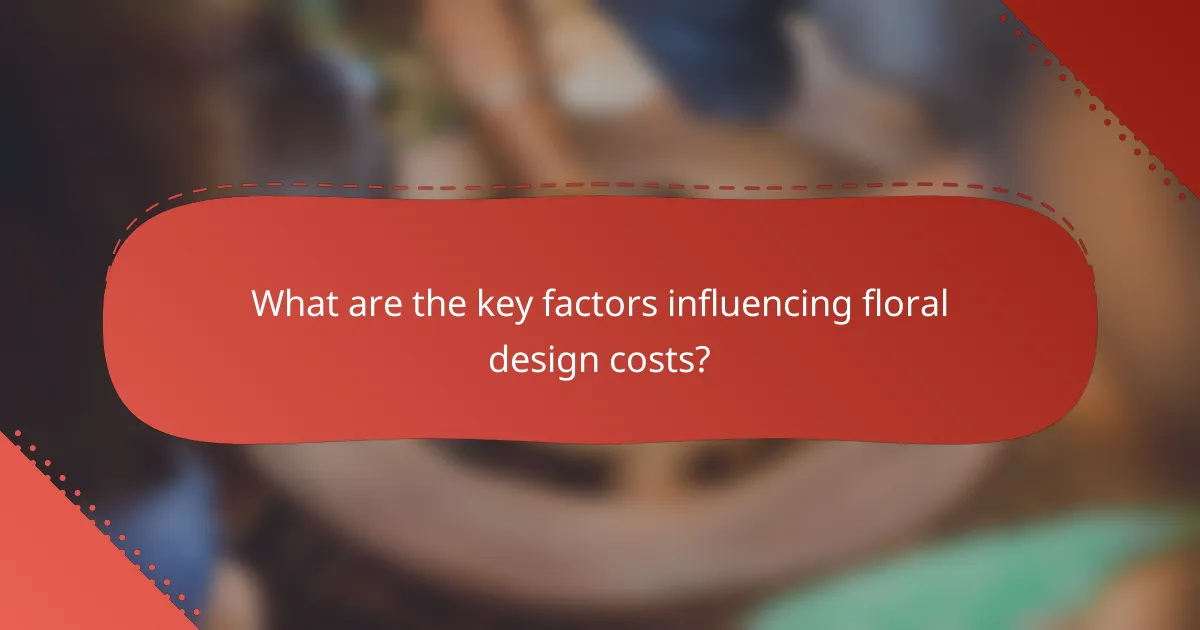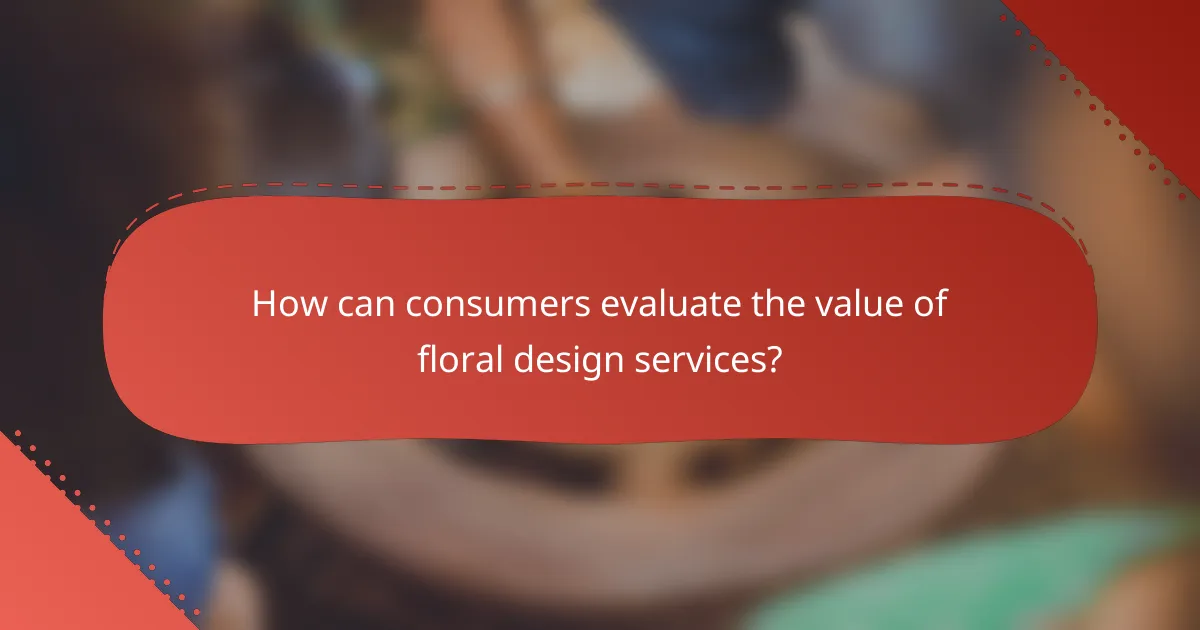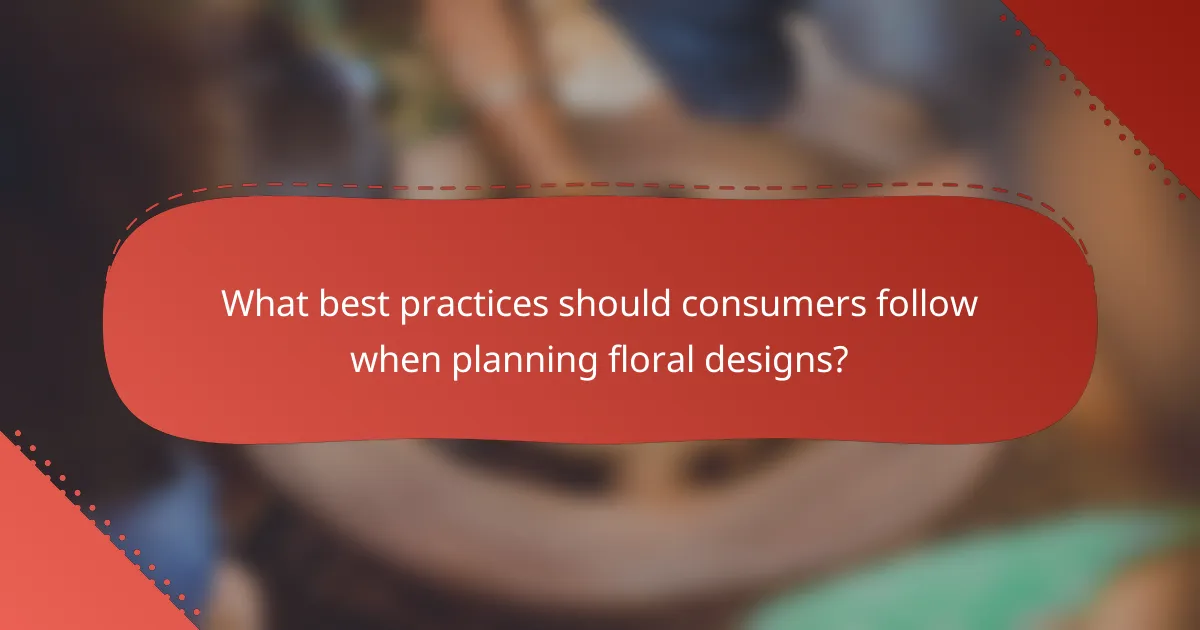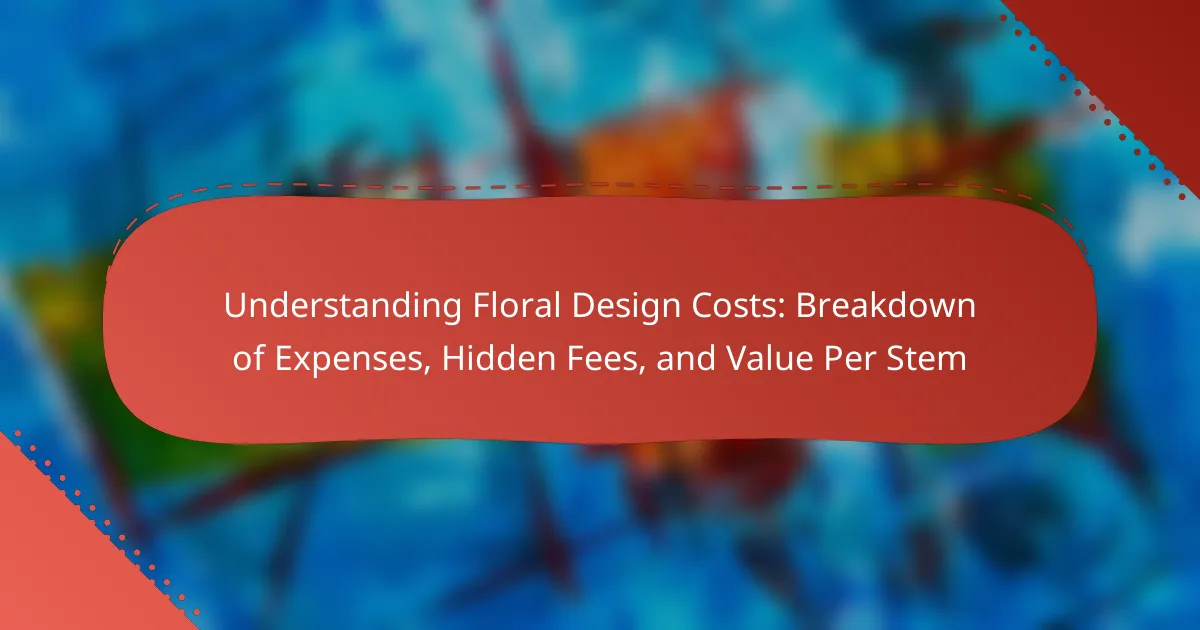
What are the key factors influencing floral design costs?
Key factors influencing floral design costs include flower type, arrangement complexity, and seasonal availability. Flower type significantly impacts costs, as premium varieties like orchids or peonies are more expensive than standard blooms like daisies. Arrangement complexity also affects pricing; intricate designs require more time and skill, leading to higher labor costs. Seasonal availability plays a crucial role; flowers in season are generally more affordable. Additionally, local market rates and transportation costs can influence overall expenses. Customization requests, such as specific colors or themes, can further raise costs. Lastly, venue size and event type may dictate the quantity and scale of floral arrangements needed.
How do seasonal variations affect floral design pricing?
Seasonal variations significantly affect floral design pricing. The availability of flowers changes with the seasons. For example, certain flowers are abundant in spring but scarce in winter. This scarcity drives up prices during off-peak seasons. Additionally, demand fluctuates with holidays and events, influencing costs. For instance, Valentine’s Day sees a spike in demand for roses, increasing their price. In contrast, flowers in season tend to be more affordable due to higher supply. Overall, seasonal changes directly impact both the cost of materials and the pricing strategies of floral designers.
What flowers are most affected by seasonal changes?
Tulips, daffodils, and peonies are flowers most affected by seasonal changes. These flowers have specific blooming periods tied to temperature and daylight. For instance, tulips bloom in spring as temperatures rise. Daffodils also thrive in early spring, emerging after winter. Peonies typically bloom in late spring to early summer. Seasonal changes affect their availability and pricing in floral design. For example, off-season flowers can be significantly more expensive due to limited supply. Understanding these dynamics is crucial for managing floral design costs effectively.
How do holidays impact floral demand and pricing?
Holidays significantly increase floral demand and pricing. During holidays, consumers often purchase flowers for gifts, decorations, and events. This surge in demand leads to a rise in prices due to limited supply. For example, Valentine’s Day and Mother’s Day see a notable spike in floral sales. According to the Society of American Florists, floral sales can increase by 20% to 30% during these peak times. Additionally, retailers may raise prices to capitalize on heightened demand. Seasonal flowers also become scarce, further driving up costs. Thus, holidays create a direct correlation between increased floral demand and elevated pricing.
What are the main components of floral design expenses?
The main components of floral design expenses include flower costs, labor, transportation, and overhead. Flower costs account for the purchase of fresh blooms and greenery. Labor expenses cover the time spent arranging and delivering the floral designs. Transportation costs involve the delivery of flowers to the event location. Overhead includes rent, utilities, and other business-related expenses. Each component contributes to the overall pricing structure in floral design. Understanding these components helps clients gauge the total investment required for floral arrangements.
What role do flower types play in overall costs?
Flower types significantly influence overall costs in floral design. Different flower types vary in price due to factors like availability, seasonality, and demand. Common flowers, such as roses and daisies, generally cost less than exotic varieties like orchids or peonies. Seasonal flowers tend to be more affordable as they are plentiful during their peak times. In contrast, out-of-season flowers often incur higher costs due to increased shipping and sourcing expenses. Additionally, the complexity of care and handling for certain flower types can also affect pricing. For example, delicate flowers may require special packaging and transportation, adding to overall costs. Thus, the type of flowers selected directly impacts the total expense of floral arrangements.
How do labor and design complexity influence pricing?
Labor and design complexity significantly influence pricing in floral design. Higher labor costs arise from intricate arrangements that require more skill and time. Complex designs often involve specialized techniques, which demand experienced florists. The more detailed the design, the longer it takes to create, increasing labor expenses. Additionally, complex arrangements may require unique materials or tools, further raising costs. According to industry reports, floral arrangements with higher complexity can increase pricing by 20% to 50%. This correlation highlights the direct relationship between labor intensity, design intricacy, and final pricing.
What hidden fees should consumers be aware of?
Consumers should be aware of several hidden fees in floral design costs. These fees can include delivery charges, which often vary based on distance and timing. Setup fees may apply for arranging flowers at venues. Additional labor costs can arise for special requests or last-minute changes. Taxes are frequently added to the final bill but may not be initially disclosed. Service charges can be included for consultations or design services. Lastly, fees for premium flowers or seasonal availability can increase overall costs unexpectedly. Transparency in pricing is essential to avoid surprises.
What are common additional charges in floral design services?
Common additional charges in floral design services include delivery fees, setup fees, and rental costs for equipment. Delivery fees vary based on distance and urgency. Setup fees apply when florists arrange flowers on-site for events. Rental costs may be charged for items like vases or stands. Additional charges can also arise from last-minute changes or specialty flowers. These costs can significantly affect the overall budget for floral services. Understanding these potential charges helps clients plan effectively.
How can consumers identify and avoid hidden fees?

How can consumers evaluate the value of floral design services?
Consumers can identify and avoid hidden fees by thoroughly reviewing contracts and service agreements. They should request a detailed breakdown of all costs upfront. This includes labor, materials, and any additional charges. Consumers must ask specific questions about potential fees not listed. Checking for vague language in contracts can reveal hidden costs. Additionally, comparing quotes from multiple floral designers can highlight discrepancies in pricing. Reading customer reviews often uncovers experiences related to hidden fees. Transparency is key; trustworthy florists will provide clear explanations of their pricing structure.
What is the significance of value per stem in floral arrangements?
Value per stem in floral arrangements indicates the cost-effectiveness of individual flowers. It helps in budgeting for floral designs by providing a clear metric for expense evaluation. A higher value per stem may suggest premium quality or rare flowers. Conversely, a lower value can indicate more common varieties. This metric aids florists in selecting flowers that fit clients’ budgets while achieving desired aesthetics. Understanding value per stem also assists in pricing floral arrangements competitively. It ensures that florists can maintain profitability while offering quality products. Thus, value per stem is crucial for both cost management and customer satisfaction in floral design.
How is value per stem calculated?
Value per stem is calculated by dividing the total cost of flowers by the number of stems purchased. This formula provides a clear metric for understanding the cost efficiency of floral arrangements. For example, if a bouquet costs $30 and contains 10 stems, the value per stem is $3. This calculation helps consumers assess the price relative to the number of stems they receive. It also aids florists in pricing their products competitively. Understanding this value allows for better budgeting in floral design costs.
Why is value per stem important for budgeting?
Value per stem is crucial for budgeting in floral design. It allows designers to determine the cost-effectiveness of their floral arrangements. By calculating the value per stem, designers can assess how much they are spending relative to the quality and impact of the flowers used. This metric helps in setting prices that cover costs while ensuring profitability. Additionally, understanding value per stem aids in comparing different flower varieties and suppliers. It enables informed decisions about which flowers to include based on budget constraints. Accurate budgeting based on value per stem can lead to better financial planning and resource allocation in floral projects.
What factors contribute to perceived value in floral design?
Factors contributing to perceived value in floral design include quality of materials, creativity, and customization. High-quality flowers and foliage enhance the overall aesthetic. Creativity in arrangement can create unique and memorable designs. Customization allows for personal touches that resonate with clients. Additionally, the designer’s reputation can influence perceived value. A well-known designer may command higher prices due to trust and past success. Customer service and experience also play a role. Positive interactions can enhance the overall perception of value. These factors collectively shape how clients view floral design offerings.
How do quality and freshness affect perceived value?
Quality and freshness significantly enhance perceived value in floral design. High-quality flowers are often associated with vibrant colors and longer vase life. Freshness ensures that flowers maintain their beauty and longevity, appealing to customers. Research indicates that consumers are willing to pay a premium for flowers that appear fresher and of higher quality. For example, a study by the American Floral Endowment found that freshness can increase a customer’s willingness to pay by 20%. Therefore, quality and freshness directly correlate with higher perceived value in floral arrangements.
What role does presentation play in the value of floral arrangements?
Presentation significantly enhances the value of floral arrangements. It influences the perceived quality and aesthetic appeal. A well-presented arrangement attracts attention and creates emotional impact. Research indicates that visual appeal can increase consumer willingness to pay by up to 30%. Effective presentation involves color coordination, arrangement style, and container choice. Each element contributes to the overall impression and desirability of the arrangement. Additionally, presentation can reflect the occasion, making it more relevant. Thus, thoughtful presentation is essential for maximizing the value of floral arrangements.
How can consumers ensure they receive fair pricing?
Consumers can ensure they receive fair pricing by conducting thorough research on floral design costs. They should compare prices from multiple florists to identify average rates. Understanding the breakdown of expenses helps consumers recognize potential hidden fees. Asking for detailed quotes can clarify what is included in the price. Consumers should also inquire about the value per stem to assess quality. Reading reviews and testimonials provides insights into pricing fairness. Transparency in pricing practices is a sign of a reputable florist. Engaging in open communication with florists can lead to better pricing negotiations.
What questions should consumers ask their florist?
What questions consumers should ask their florist include inquiries about pricing and costs. Consumers should ask for a detailed breakdown of costs for arrangements. They should inquire about any hidden fees associated with delivery or setup. Asking about the types of flowers available and their seasonal availability is also important. Consumers should confirm the florist’s policy on substitutions if specific flowers are unavailable. It’s essential to ask about the florist’s experience and portfolio for similar events. Lastly, consumers should inquire about the timeline for placing orders and any deposit requirements. These questions help ensure clarity on floral design costs and overall service.
How can consumers compare quotes effectively?

What best practices should consumers follow when planning floral designs?
Consumers can compare quotes effectively by obtaining multiple quotes from different floral designers. This allows for a clear understanding of price variations. Next, consumers should ensure that each quote includes a detailed breakdown of costs. This breakdown should specify expenses such as flower types, design fees, and delivery charges. Additionally, consumers should compare the quality of flowers and services offered. Researching reviews and testimonials can provide insights into the designers’ reputations. Lastly, consumers should consider the overall value rather than just the lowest price. This includes assessing the uniqueness of designs and the experience of the florist.
How can consumers create a budget for floral design?
Consumers can create a budget for floral design by assessing their needs and setting a clear spending limit. First, they should determine the purpose of the floral arrangement, such as for an event or decoration. Next, consumers can research typical costs associated with floral design services in their area. This includes understanding the price range for different types of flowers and arrangements.
Consumers should also account for additional expenses, such as delivery fees, setup costs, and any rental items needed. They can prioritize which elements are most important to them, allowing for flexibility in their budget. Establishing a total budget helps guide decisions on flower types and design complexity.
Lastly, consumers can consult with floral designers to get quotes and adjust their budget based on professional insights. This approach ensures that they stay within financial limits while achieving their desired floral aesthetic.
What are effective strategies for setting a floral budget?
Effective strategies for setting a floral budget include determining your overall budget first. Identify the total amount you can allocate for floral arrangements. Next, prioritize the floral elements that matter most to you, such as bouquets, centerpieces, and decorative accents. Research local florists to understand pricing trends and services offered. Create a detailed list of floral needs, specifying types and quantities. This helps in estimating costs accurately. Consider seasonal flowers, as they are often less expensive. Factor in delivery and setup fees, which can impact the overall budget. Finally, allow for a contingency of 10-15% for unexpected expenses. This structured approach ensures you stay within your budget while achieving your floral design goals.
How can consumers prioritize their floral needs within a budget?
Consumers can prioritize their floral needs within a budget by identifying essential floral arrangements first. They should assess the occasions requiring flowers, such as weddings or events. Next, consumers can research local florists for competitive pricing. Comparing prices helps identify the best value options. Additionally, choosing seasonal flowers often reduces costs significantly. Consumers should also consider purchasing in bulk for larger events. Setting a clear budget before shopping ensures spending stays within limits. Finally, consumers can explore DIY arrangements using affordable flowers and supplies to save money.
What tips can help consumers maximize their floral design investment?
To maximize their floral design investment, consumers should consider several strategies. First, establish a clear budget before engaging with florists. This helps in aligning expectations and avoiding overspending. Second, choose seasonal flowers as they are typically less expensive and more vibrant. Third, consider using fewer, larger arrangements instead of many small ones. This can create a stronger visual impact at a lower cost. Fourth, communicate specific needs and preferences to the florist. Clear communication can lead to tailored designs that fit the budget. Additionally, explore rental options for vases and decor. Renting can be more economical than purchasing. Lastly, plan ahead to avoid last-minute costs. Early planning allows for better pricing and availability. These tips can help consumers make informed decisions and get the best value for their floral design investment.
How can consumers choose flowers that offer the best value?
Consumers can choose flowers that offer the best value by considering several key factors. First, they should compare prices across different retailers. This helps identify competitive pricing. Second, consumers should evaluate the quality of flowers. Freshness significantly impacts longevity and appearance. Third, they should consider seasonal flowers. Seasonal blooms are often more affordable and abundant. Fourth, buying in bulk can reduce costs per stem. Many florists offer discounts for larger orders. Finally, consumers should inquire about hidden fees. Understanding delivery and service charges helps avoid unexpected expenses. Research indicates that consumers save up to 30% by choosing locally sourced, seasonal flowers (Source: Floral Industry Report, 2022).
What are the benefits of working with a reputable florist?
Working with a reputable florist ensures high-quality floral arrangements. Reputable florists have extensive experience and knowledge in floral design. They source fresh, premium flowers, which enhances the overall quality. Their expertise allows for creative and personalized designs tailored to client needs. Additionally, they often provide reliable delivery services, ensuring timely arrival for events. Many reputable florists also offer consultations to discuss specific preferences and themes. This personalized service can significantly enhance the overall experience. Studies show that customers who choose reputable florists report higher satisfaction rates.
What common mistakes should consumers avoid in floral design planning?
Consumers should avoid several common mistakes in floral design planning. One mistake is not setting a clear budget. A defined budget helps in making informed choices. Another mistake is neglecting to communicate preferences with the florist. Clear communication ensures the design aligns with expectations. Additionally, consumers often overlook the venue’s environment. Understanding the space can influence floral choices. Lastly, many consumers fail to consider the seasonality of flowers. Seasonal flowers are often more affordable and fresher. These mistakes can lead to increased costs and unsatisfactory results in floral design planning.
How can consumers prevent overspending on floral arrangements?
Consumers can prevent overspending on floral arrangements by setting a clear budget before shopping. This budget should outline the maximum amount they are willing to spend. Researching local florists and comparing prices can help identify the best deals. Consumers should also consider seasonal flowers, which are typically less expensive. Additionally, opting for simpler designs can reduce costs significantly. Avoiding last-minute purchases helps prevent impulse buying, which often leads to overspending. Utilizing online platforms to find discounts or promotions can also aid in saving money. Finally, consumers should ask florists about any hidden fees upfront to avoid surprises.
What are the pitfalls of last-minute floral orders?
Last-minute floral orders often lead to limited selection and higher prices. Florists may have fewer flowers available due to supply constraints. This can result in a lack of variety in arrangements. Additionally, rush fees may be applied for expedited services. The quality of flowers may also be compromised due to time constraints. Freshness can be impacted if flowers are not sourced promptly. Last-minute orders can lead to increased stress and decision-making pressure for customers. Overall, planning ahead helps avoid these pitfalls.
The main entity of this article is floral design costs, which encompasses various factors influencing pricing. Key aspects discussed include the impact of flower type, arrangement complexity, and seasonal availability on overall expenses. The article delves into the components of floral design expenses, such as flower costs, labor, and transportation, while also highlighting hidden fees and strategies for consumers to evaluate value per stem. Additionally, it addresses how holidays and seasonal variations affect demand and pricing, providing insights into budgeting and prioritizing floral needs effectively.
